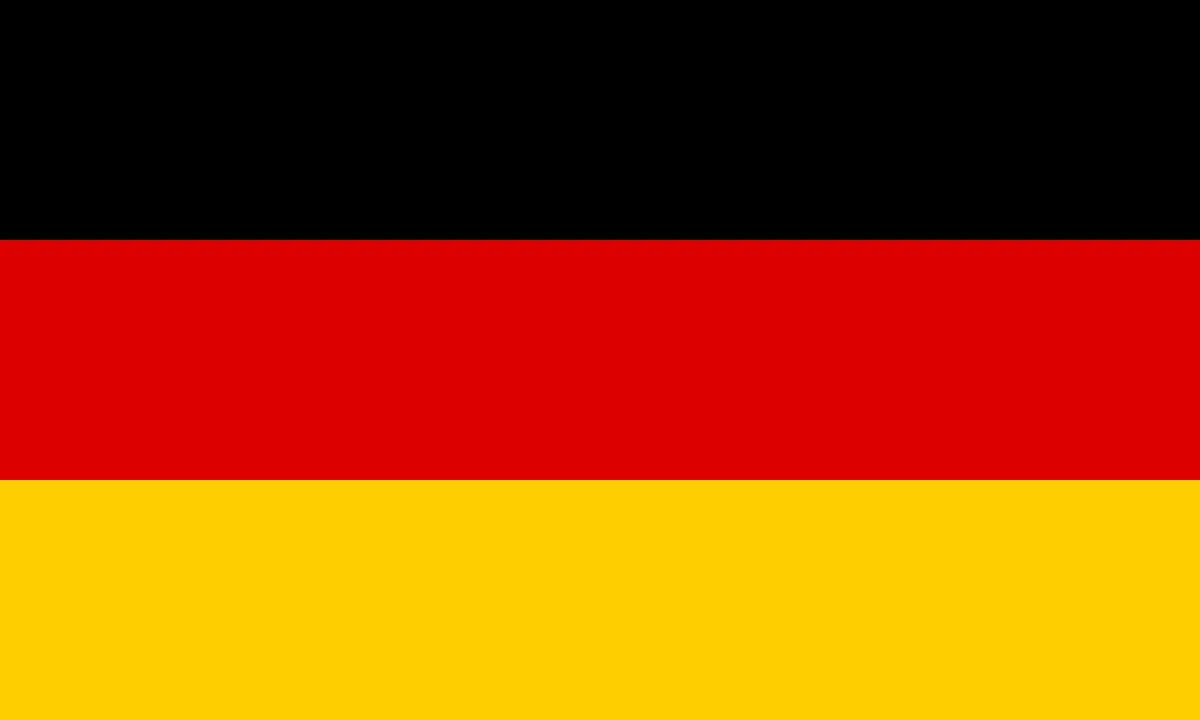
Germany
Discover the Meaning and Symbolism Behind the German Flag
The German flag, also known as the Bundesflagge or Bundesdienstflagge, is a tricolour flag consisting of three equal horizontal bands of black, red, and gold. It is one of the oldest national flags in the world, having been officially adopted by the Federal Republic of Germany on May 9, 1949.
History of the Flag
The current design of the German flag has its roots in the 19th century, when the black-red-gold tricolour was first used as a symbol of German unity and freedom during the Revolutions of 1848. The black-red-gold combination was inspired by the colours of the uniforms of the Lützow Free Corps, a volunteer corps that fought against Napoleon during the Napoleonic Wars.
After the Revolutions of 1848, the black-red-gold tricolour continued to be used by various groups as a symbol of German nationalism and independence. It was officially adopted as the national flag of the Weimar Republic in 1919, following the collapse of the German Empire at the end of World War I.
The flag remained in use throughout the Weimar Republic and was also used by the Nazi Party during the Third Reich. After World War II, the black-red-gold tricolour was re-adopted as the national flag of the Federal Republic of Germany in 1949.
Symbols and Colours
The three colours of the German flag are symbolic of the ideals of freedom, democracy, and unity. The black stripe represents Germany's past and the challenges the country has faced. The red stripe represents the blood shed during the country's struggles for freedom and democracy. The gold stripe represents the country's prosperity and hope for the future.
National Anthem
The national anthem of Germany is "Das Lied der Deutschen," or "The Song of the Germans." The lyrics of the national anthem were written by August Heinrich Hoffmann von Fallersleben in 1841 and were set to music by Joseph Haydn. The national anthem was officially adopted as the national anthem of the Federal Republic of Germany in 1952.
Flag Protocol
There are strict protocols in place for the use and display of the German flag. The flag should be flown with the black stripe at the top, the red stripe in the middle, and the gold stripe at the bottom. The flag should be flown at half-mast as a sign of mourning, and should not be flown in inclement weather.
The Evolution of the Flag
Throughout its history, the German flag has undergone several changes. The black-red-gold tricolour has been used as a symbol of German unity and independence for over 170 years, and has been the official national flag of Germany for over 70 years. Despite its long history and cultural significance, the flag remains an important symbol of Germany's past, present, and future.
Conclusion
The German flag is a powerful symbol of the country's history, culture, and values. It represents the struggles and triumphs of the German people and serves as a reminder of the country's commitment to freedom, democracy, and unity.

